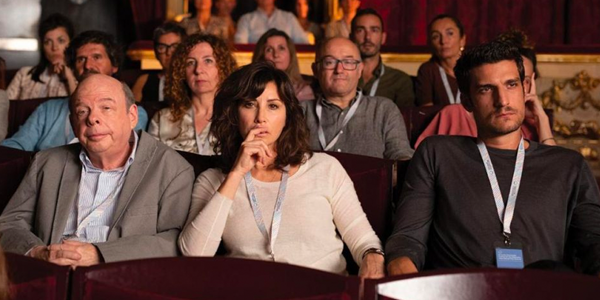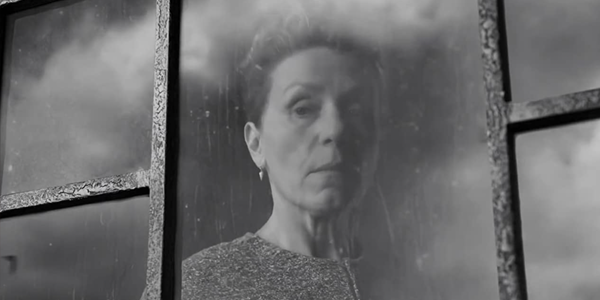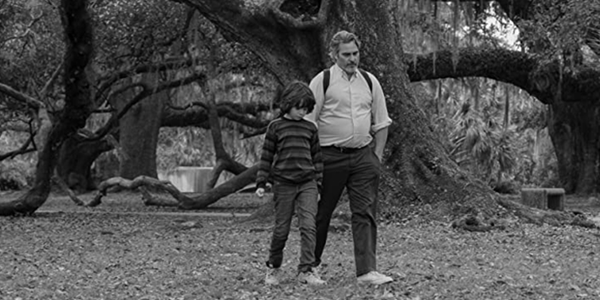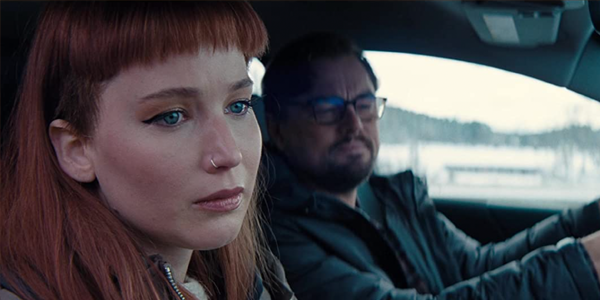recent reviews
Sign up for our monthly newsletter
to stay up to date on Cineluxe
The successful book series spawns an even more successful Amazon Prime series, with Tom Cruise nowhere to be seen
by John Sciacca
February 13, 2022
“My name is Jack Reacher. No middle name, no address. I’ve got a rule: People mess with me at their own risk.”
—Jack Reacher’s Rules
The name Reacher either immediately conjures up a pre-defined and fully formed image in your mind, or it means nothing. If you’re in the first group, then you’ve probably already devoured all eight episodes of Amazon Primes’s original series Reacher and might enjoy this review from one fan to another. If you’re in the second group . . . well, I envy you in a way. You have an incredible literary road ahead of you and a fantastic new series to kickstart your journey.
I first discovered Lee Child’s character Jack Reacher while visiting my wife’s family in Alabama. There were a couple of paperbacks lying around that my father-in-law had recently finished, so I picked one up and started reading. And that was it.
Since then, I’ve devoured all of the Reacher novels, which currently number 27. And while they mostly follow a similar pattern—Reacher rolls/walks into a new town with nothing more than the clothes on his back and a few dollars in his pockets where he randomly stumbles across some trouble or injustice he’s compelled to settle, and in doing so he meets some strong, smart, attractive female he either needs to help or work with to resolve the issue before putting his folding toothbrush back in his pocket and heading on to the next place—they’re still great fun to read. Child keeps the language simple, the story interesting, the locales and characters varied, and the pace fast.
What we learn early on—and hear continually throughout each novel—is that Reacher is a hulking, muscle-mountain of a man who’s never intimidated by anyone or anything. While he doesn’t go looking for fights per se he certainly doesn’t back away from them. Standing 6 foot 5 inches and weighing upwards of 250 pounds, in the novel Never Go Back, Child describes him as having “a six-pack like a cobbled city street, a chest like a suit of NFL armor, biceps like basketballs, and subcutaneous fat like a Kleenex tissue.”
While Reacher is incredibly observant (“details matter”) and brilliant at deducing clues and connecting the dots from even the smallest lead à la Sherlock Holmes or Hercule Poirot, he solves most problems with his fists (or forehead—a brutal headbutt is one of his preferred attacks) or a gun (“Twelve-gauge lead shots settle most disputes at the first time of asking”). His hyper-tuned instincts and investigative skills have been honed and refined from his years leading the Army’s (fictional) 110th Special Investigations Unit (“You don’t mess with the special investigators”) where he solved some of the Army’s toughest cases, and now that he’s on his own, he prefers to just drift around wherever whim or the next bus or hitchhiked ride takes him.
And coffee. Lots and lots of hot, black coffee.
When I saw Amazon was going to have an original series about Jack Reacher, I was excited but a little apprehensive. After all, we’ve been down this road twice before with films starring Tom Cruise (Jack Reacher and Never Go Back). And while those films weren’t bad, 5-foot-whatever Cruise could just never be the physical monster Child has created and cemented in reader’s minds. (For the record, I always pictured Reacher as looking like a younger Dolph Lundgren.) Even with forced perspective and other camera tricks, Cruise was just never going to be convincing as Reacher. But when I saw that Child was serving as executive producer and a writer on the series (and actually has a brief cameo at the end of episode eight in the diner) and they cast Alan Ritchson (famous for playing Hawk on Titans and District 1 tribute Gloss in The Hunger Games: Catching Fire), I knew this had a shot to be the series I’d been hoping for. You can’t have a believable Reacher series without a believe actor in the lead, and Ritchson brings all the Reacher feels. Need more convincing the creators of this series understand and respect the character? You’ll recall the phrase, “Reacher said nothing,” throughout the books. Well, that he sits silent without saying a single word until about 7 minutes into the first episode.
Season One covers the events from the first novel, Killing Floor, and opens with Reacher rolling into Margrave, Georgia on a whim to learn more about jazz musician Blind Blake. Shortly after arriving, he’s arrested for a murder he didn’t commit. As is the way with his life, things get personal and he gets entangled in the events—and bodies start piling up—so he decides to figure out what’s wrong with picturesque Margrave and its seemingly too-good-to-be-true benefactor Mr. Kliner (Currie Graham). While he figures things out and gets events sorted, he befriends Officer Roscoe Conklin (Willa Fitzgerald) and Captain Oscar Finlay (Malcolm Goodwin).
The story hews pretty closely to the book, though they’ve humanized Reacher a bit. In the books, no one typically lands a finger on him in a fight and pre-fight discussions usually go something like this:
“You’re about to get your ass kicked!”
“No. I’m just gonna break the hands of three drunk kids.”
“There’s four of us.”
“One of you has got to drive to the hospital.”
In the series, fights are a little more two-sided, with Reacher taking his share of punches, kicks, and even knife wounds, though he always prevails. Another change is the addition of Frances Neagley (Maria Sten), an ex-member of the 110th who served under him and is one of the few recurring characters in the series. And while much of the books are told from Reacher’s point of view based on what he is thinking—and the lizard-brain instincts that help him act and survive—there are no voiceovers here.
Also, be mindful of the TV-MA rating. (Amazon actually rates it 18+.) While I’d say the books are mostly PG-13, there’s some pretty strong language throughout the series, more than a fair bit of
violence, and a couple of brutal crime scenes, one involving, ummm, genital mutilation.
Shot in the increasingly-popular-for-streaming aspect ratio of 2:1, Reacher walks a visual line between cinematic and made-for-TV. Resolution and clarity mostly shine in closeups, letting you appreciate the fine patterns, sharp lines, and details in Finlay’s variety of tweed jackets or vests, or the bulging muscles in Ritchson’s super-human arms. The lenses used often give a very “portrait mode” look to images, with characters in the foreground often in clear, sharp focus, with everything behind or around them blurred.
Dark and night scenes are clear and have plenty of depth and shadow detail, but the color grade on exterior shots often has a kind of bronze cast. The contrast is often pushed, with clouds losing definition in favor of brightness.
Sonically, the 5.1 Dolby Digital audio does a fine job of serving the mostly dialogue-driven story, letting you clearly understand what the characters are saying. The surrounds are brought into play for some ambient sounds as well for music, but it isn’t an overly dynamic mix. The series finale has the most traditional action with gun battles and explosions that offer a bit more sonic excitement and bring the subwoofer into play, but this isn’t a series designed to showcase your audio system’s capabilities.
While clearly designed to appeal to the millions of existing Reacher fans, the interesting story and solid acting are enough to bring the unaffiliated into the fold. And after being released for just three days, Amazon announced Reacher will return for a second season, claiming it’s already one of their Top Five most-watched shows of all time and among its highest-rated original series, with subscribers giving it an average rating of 4.7 out of 5. For those who can’t wait for more Reacher until Season Two drops, Die Trying is the next book in the series. Enjoy.
Probably the most experienced writer on custom installation in the industry, John Sciacca is co-owner of Custom Theater & Audio in Murrells Inlet, South Carolina, & is known for his writing for such publications as Residential Systems and Sound & Vision. Follow him on Twitter at @SciaccaTweets and at johnsciacca.com.
PICTURE | Reacher walks a visual line between cinematic and made-for-TV. Details mostly shine in closeups, and dark scenes are clear with plenty of depth and shadow detail, but the color grade on exterior shots often has a bronze cast and the contrast is often pushed.
SOUND | The 5.1 Dolby Digital audio does a fine job of serving the mostly dialogue-driven story, but this isn’t an overly dynamic mix, with the surrounds brought into play mostly for ambient sounds and music
© 2023 Cineluxe LLC






